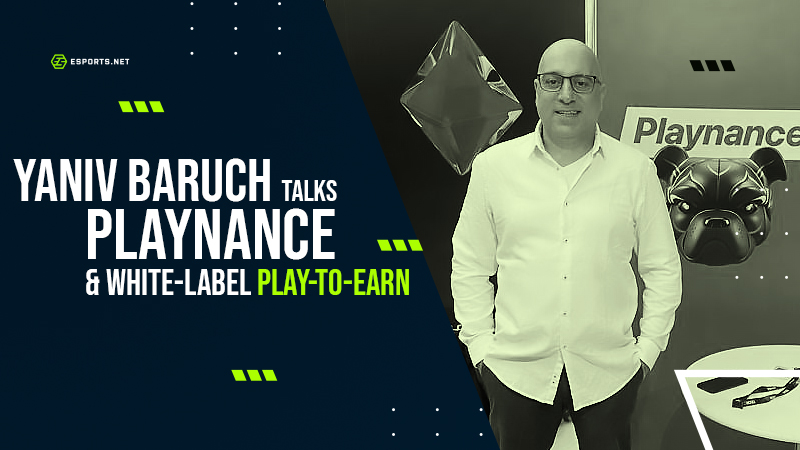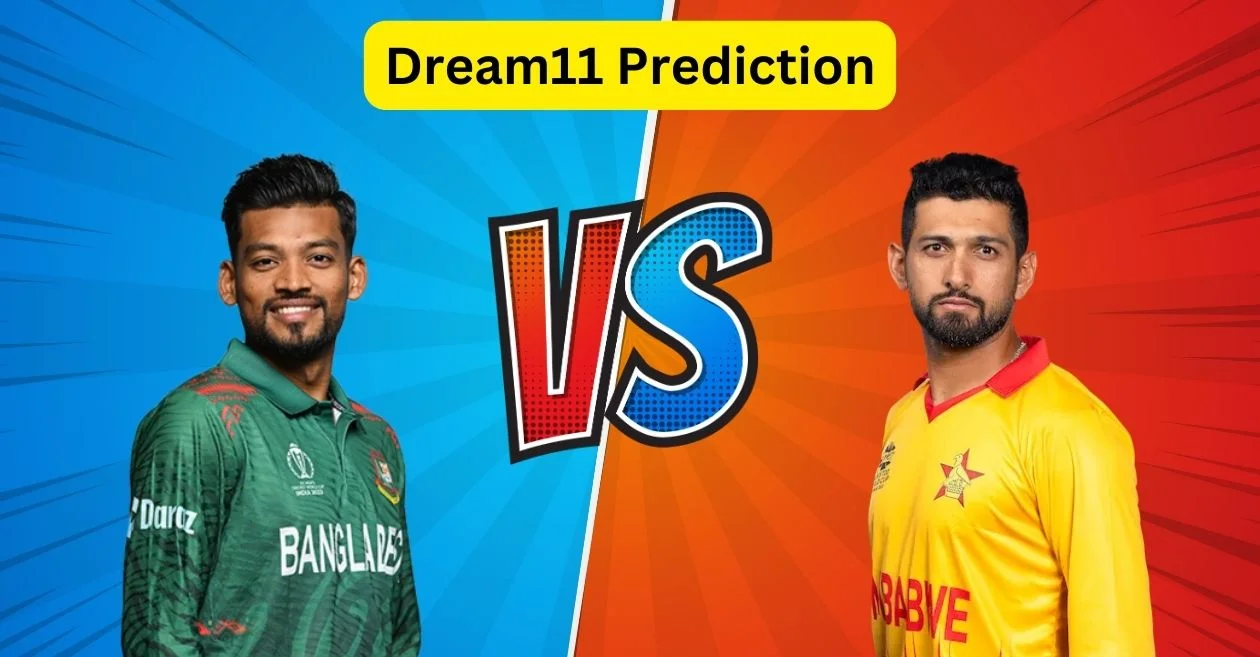I had a chance to talk with Yaniv Baruch, the COO of Playnance. We discussed their platform, the merge of crypto trading and gaming and all upcoming projects for the platform.

Tom France: It’s great to finally connect Yaniv.
Please introduce yourself to the readers at home and describe your role with Playnance.
Absolutely, and thank you for having me. I’m Yaniv Baruch, the Chief Operating Officer at Playnance. My journey in the fintech world began in 2004 at the Royal Bank of Canada as a Stock Trader. Since then, I’ve navigated pivotal roles in the industry, including leading major fintech companies and even co-founding a peer-to-peer crypto exchange.
In January 2021, I joined Playnance, where I focus on driving strategic partnerships and spearheading growth initiatives. We specialize in a unique plug-and-play, white-label P2P trading game, revolutionizing the play-to-earn and blockchain space. My role involves blending my experience in market research, partnerships, financial modeling, and blockchain technology to push the boundaries of what’s possible in the fintech and gaming sectors.
Can you tell us about Playnance and how it’s contributing to the evolving landscape of Web3 platforms?
YB: Playnance is a B2B Web3 platform that’s reshaping the intersection of gaming, finance, and blockchain. Our core offering is a peer-to-peer trading game called UpVsDown, which is centered around predicting Bitcoin price movements. It’s a thrilling, fast-paced title where players bet on whether the price of Bitcoin will rise or fall within a short time frame.
We use Polygon’s high-performance blockchain for all transactions, ensuring speed, security, and cost-effectiveness. It adds a layer of transparency and fairness to the game and allows for immediate payouts and smart contract-based security.
Also, as our platform operates on a decentralized model, it eliminates the traditional ‘house’ advantage, offering a level playing field for all participants. This decentralization aspect is crucial because it aligns perfectly with the ethos of cryptocurrency – democratizing access and ensuring fairness.
What inspired the creation of Playnance?
Playnance was born from a vision to merge the excitement of crypto trading with the engagement of gaming, all while appealing to a broad audience. Watching the evolving P2E landscape and the dynamic nature of cryptocurrency markets, we saw a gap in the market.
This led us to create our flagship game, which turns Bitcoin price predictions into a captivating gaming experience, making it approachable for non-crypto players while keeping up the thrill for seasoned traders.

Credit: Playnance
One of the main USPs for Playnance is 2 hours from launch to profit. How is it exactly achieved? Often, blockchain games don’t live up to the “Play-to-Earn” title for a number of reasons.
YB: With our white-label, plug-and-play model, partners can deploy a fully functional, blockchain-integrated gaming platform under their brand. It’s streamlined, efficient, and requires minimal setup time, enabling rapid market entry. For example, we have a case study where one of our partners earned $500,000 in 3 months.
The secret here is, UpVsDown directly taps into the global fascination with Bitcoin. It encourages gamers to predict Bitcoin price movements in a fast-paced, player-vs-player environment, creating an engaging and even a bit addictive experience. This model attracts a wide range of users, ensuring a high volume of transactions and user engagement from the get-go.
As for the “Play-to-Earn” aspect, winnings are distributed instantly and transparently via smart contracts. The transparent and fair reward system, where players can monetize their gaming and prediction skills, sets our model apart.
Tom France: Playnance is tailored for brands and content creators.
So far, how have they been able to benefit from the platform?
YB: We offer a shared-revenue model to our partners, ranging from influencers to large platforms that use our white-label P2P trading game to captivate their audiences and generate revenue. Let’s say, a brand or an influencer has a certain number of followers. Through collaboration with us, these brands or influencers can promote our game to their audience, earning a percentage of the profits for every user who joins our game via their platforms.
A prime example of this is a case study involving one of our clients, who focused on leveraging local influencers and targeted marketing strategies in Ukraine. Within just three months of launching their Playnance-based platform, they witnessed a remarkable revenue generation of $500,000. Our revenue-sharing model contributed to this success and allowed them to earn a significant portion of the profits generated through the platform.
Can you give us some of the biggest names across crypto and blockchain currently using Playnance?
One of our recent partnerships was with Coinstore, a prominent crypto exchange and wallet provider that will now channel its extensive user base to our trading game. For exchanges like Coinstore, aligning with Playnance’s gaming platform opens up a new revenue stream, diversifying their income sources beyond traditional trading fees. This is particularly appealing in an industry where innovation and differentiation are key to staying competitive.
We also recently collaborated with DappRadar, a leading blockchain and DeFi analytics platform. DappRadar features Playnance games on their platform, driving more users to us and enhancing our visibility within the crypto community. This partnership is based on our staple revenue-sharing model, where DappRadar earns 35% of the profit generated by their users on our games. These represent just a few of our recent significant collaborations.

Credit: Playnance
Are there any big updates in store for Playnance?
YB: We focus on the development of our own blockchain solution, an alternative to Polygon. Launching our game on a dedicated blockchain will significantly increase Web2 players’ adoption and transaction efficiency, reduce fees, and boost dynamic user engagement.
We are also discussing key partnerships with major crypto exchanges, influencers, media, and affiliate firms to further widen our user base. Overall, 2024 is going to be an exciting year for Playnance.
Tom France: You have quite a background in the financial sector and fintech.
What initially sparked your interest in blockchain and crypto?
YB: As someone who started in traditional finance at RBC and then moved through various fintech roles, I was always captivated by tech solutions that could disrupt and improve the financial landscape.
When I first came across blockchain, I was intrigued. Its capacity for transparency, security, and decentralization is something that we could never imagine in traditional finance. Also, I saw that cryptocurrencies represented not just a new asset class but a whole new ecosystem of financial interaction.
All of these factors drove me to jump into this sector and capitalize on its huge potential, which is what we’re trying to do with Playnance.
Tom France: Competitive gaming is a multi-million dollar industry.
In what ways is Playnance taking advantage of competitive gaming?
We’re making it very easy for users to jump into competitive blockchain gaming. Our approach isn’t just about skill or strategy; it’s about market prediction and financial acumen – something that you’d generally see in traditional online gambling. The process is simple, and there’s no learning curve. Players engage in real-time, player-vs-player scenarios to predict Bitcoin price movements – and it turns market analysis into a competitive and thrilling gaming experience. This sets us apart in the competitive gaming industry and attracts a diverse audience interested in financial markets.
Tom France: To end on a more personal note..
Are there any P2E games you are looking forward to or have been playing a lot? Or perhaps any Web2 games that have caught your attention recently?
In the P2E space, I’ve been closely following and enjoying Axie Infinity. Its blend of strategy and digital pet universe is quite intriguing, especially with its community-driven economy. Watching players earn through skilled gameplay and participation in the ecosystem is fascinating.
As for more traditional games, I’m a fan of competitive titles like Call of Duty and Counter-Strike. I often jump into these games whenever I have some free time, just to unwind and have that thrill of FPS. I would really love to try some of the new AAA games that came out this year as well.
Read next: John Schneider talks ACXYN and AI driven solutions in gaming







 " title="
" title="









You must be logged in to post a comment Login